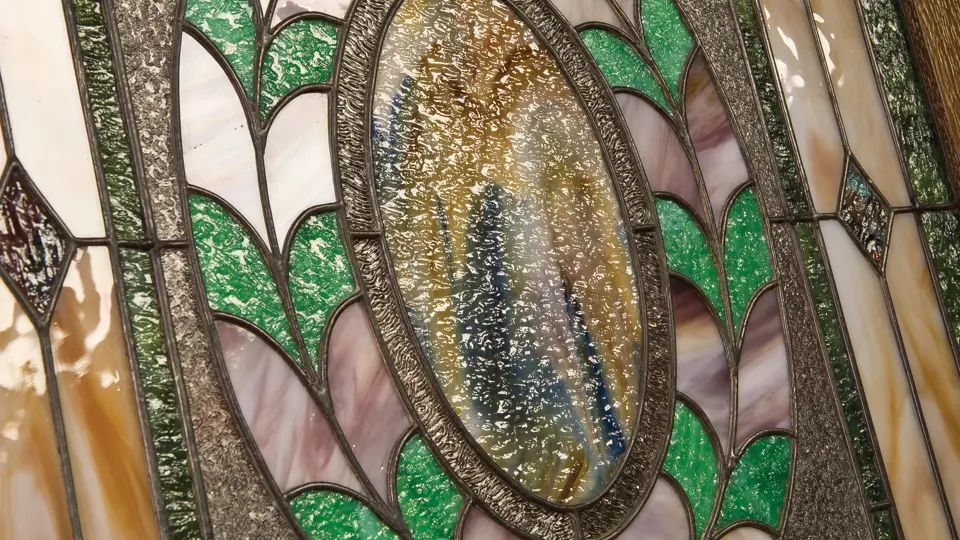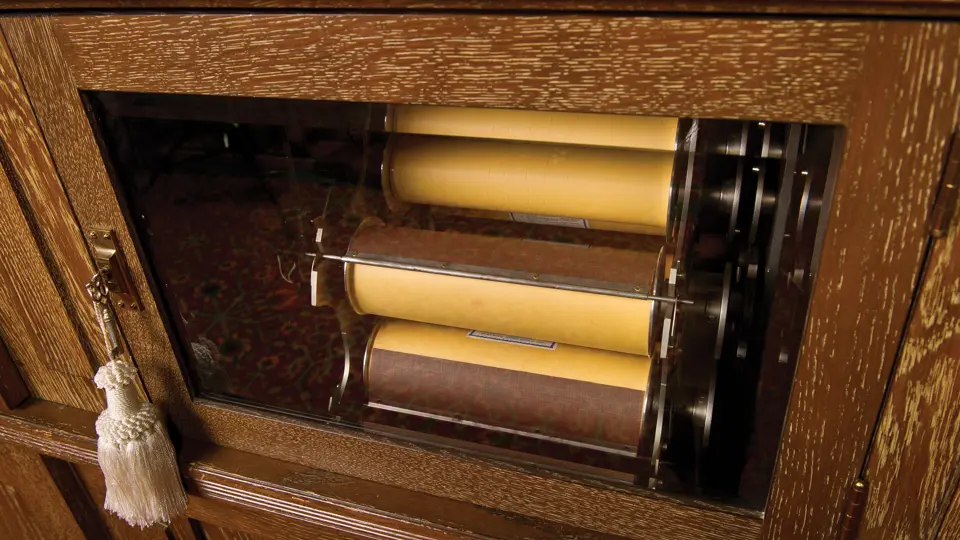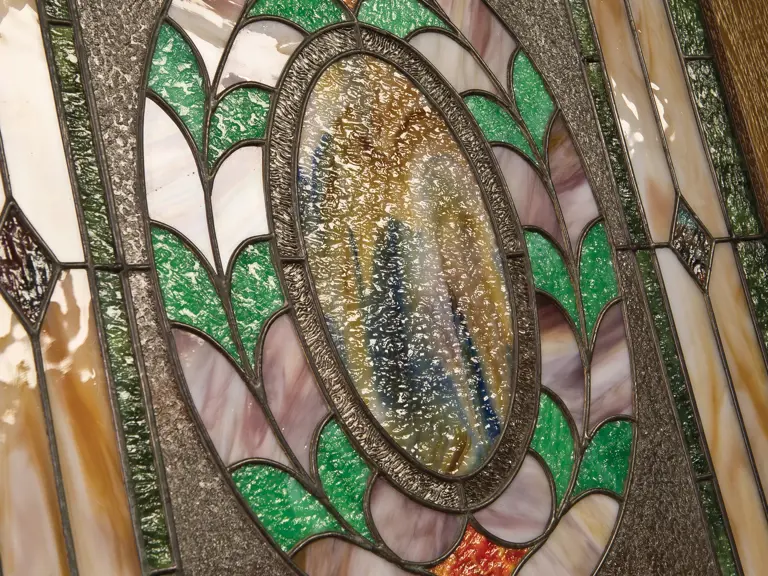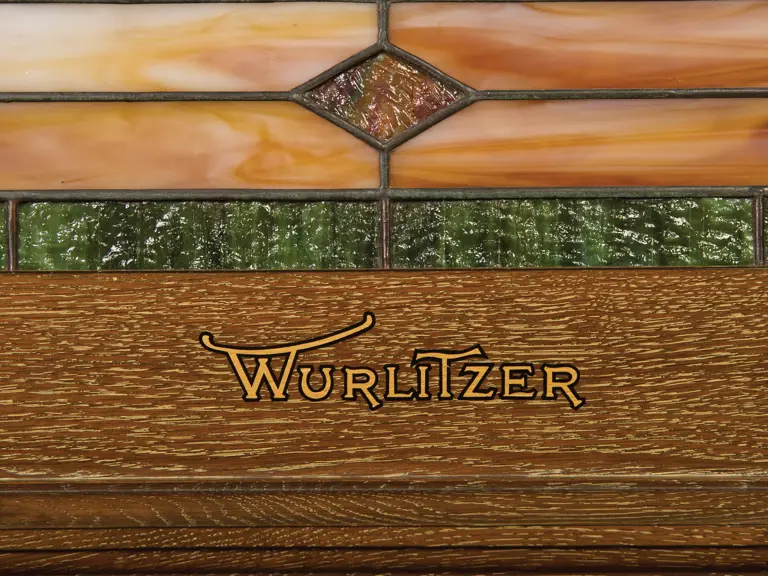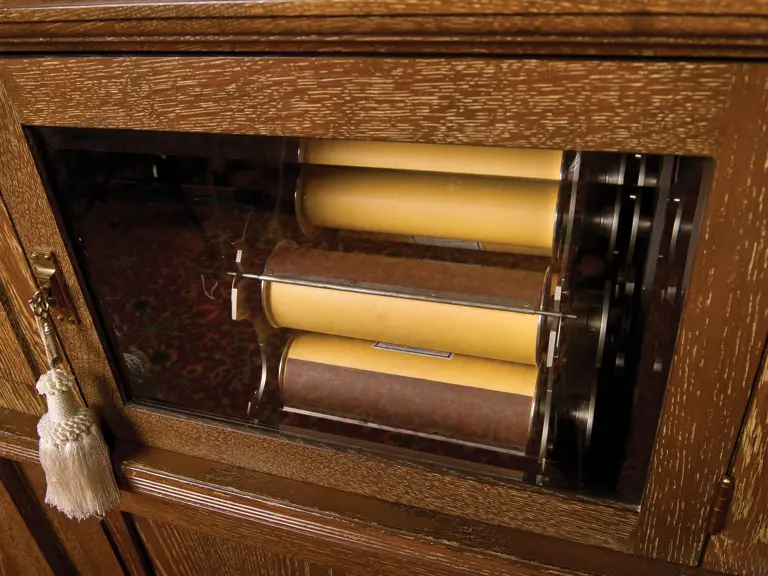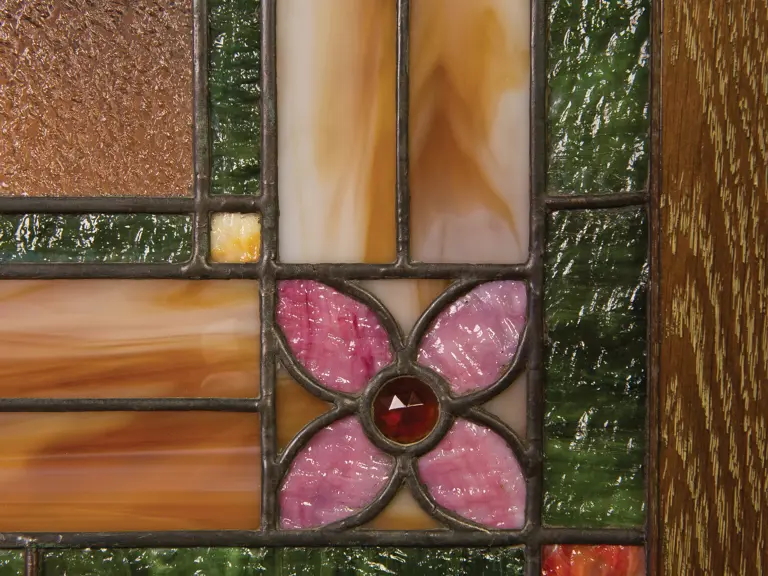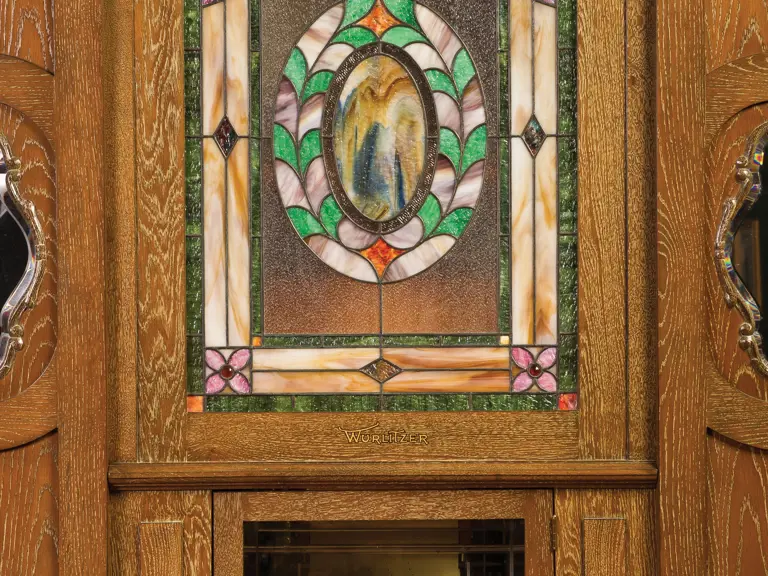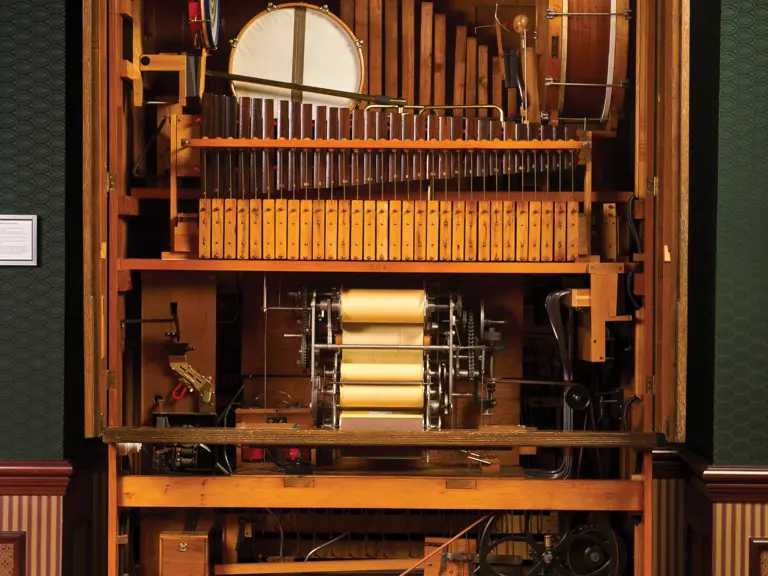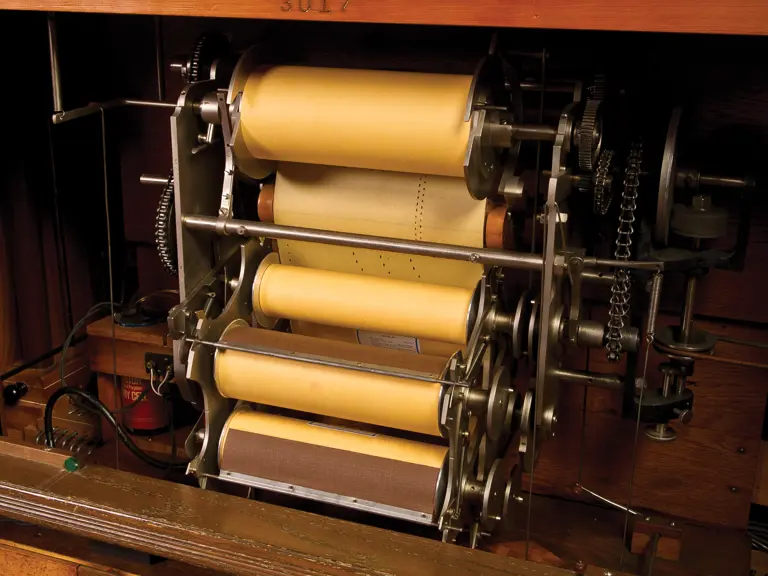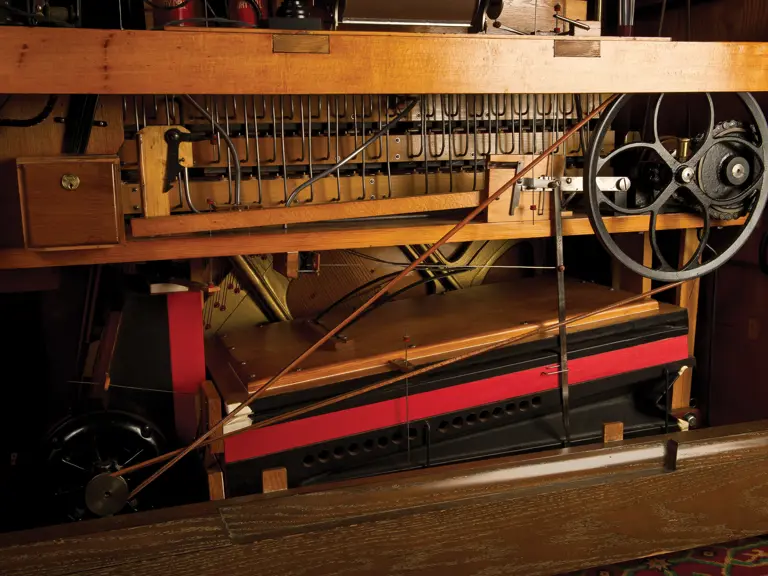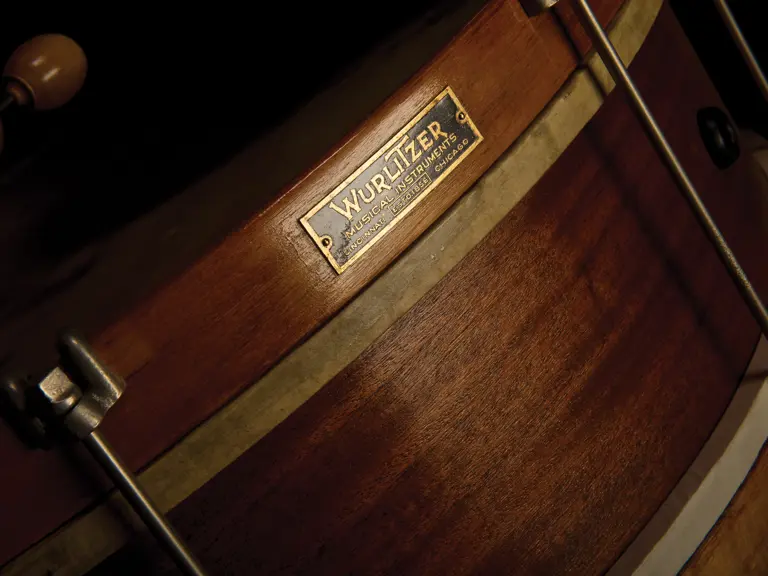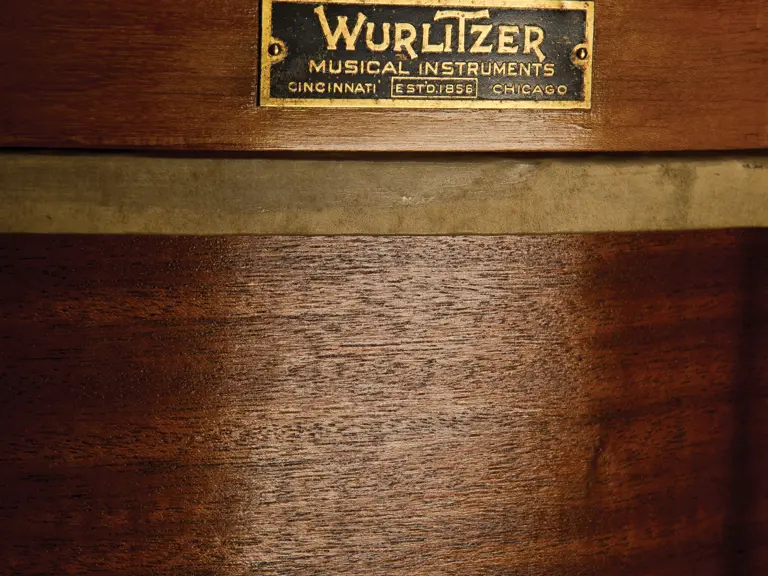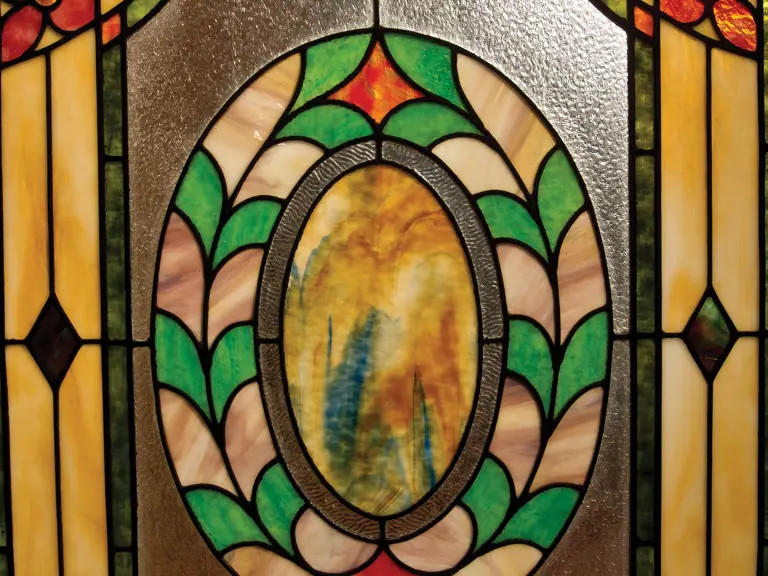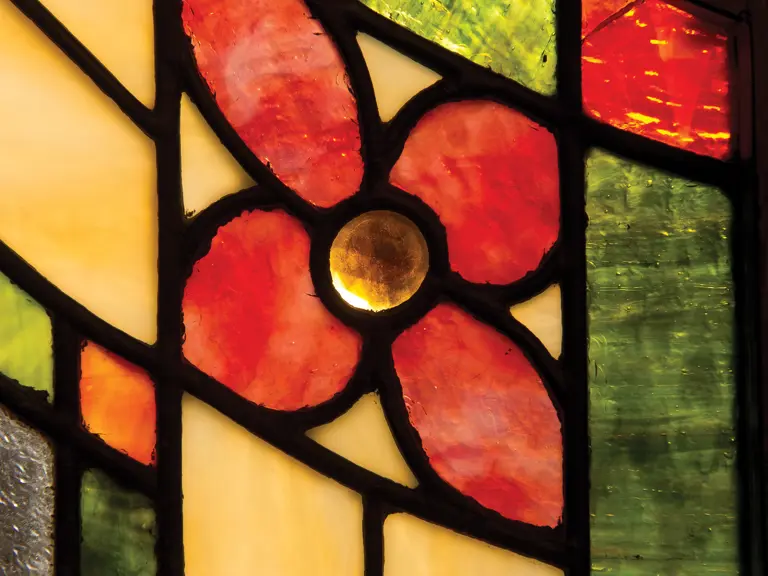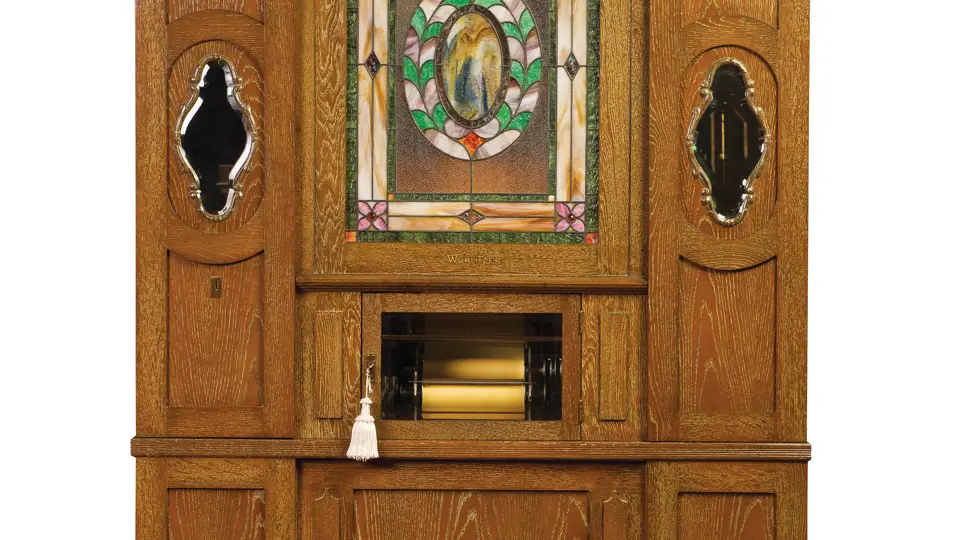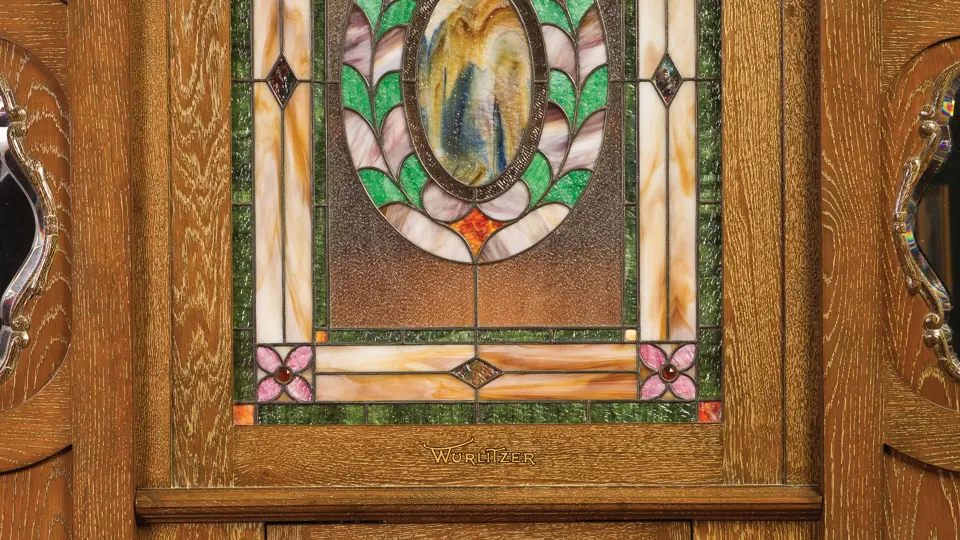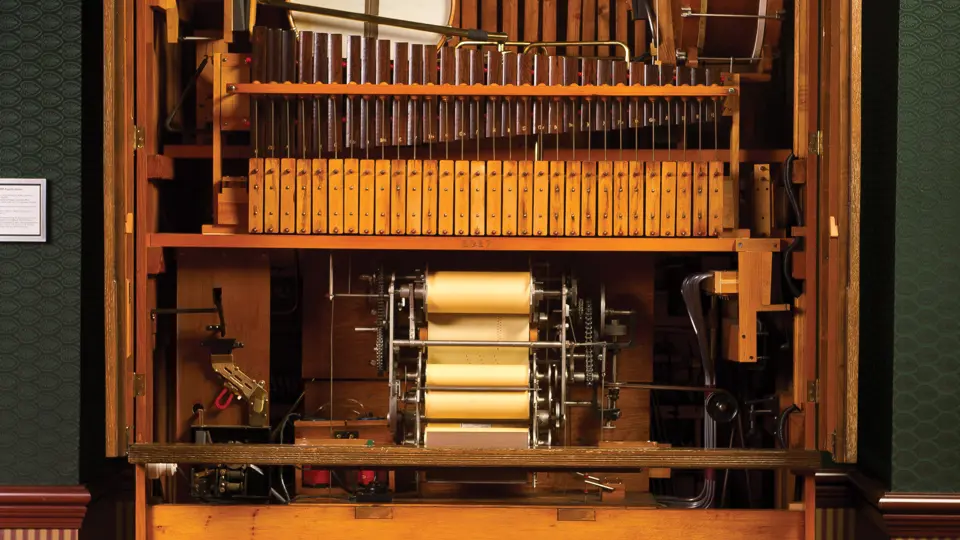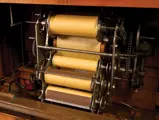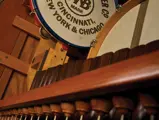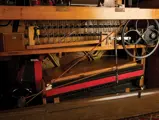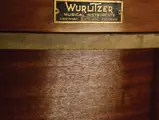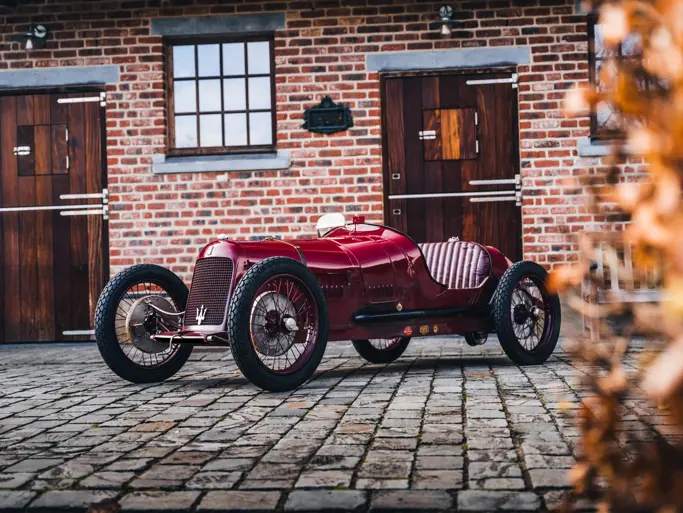 | Boca Raton, Florida
| Boca Raton, Florida
Rudolph Wurlitzer Co. (North Tonawanda, New York)
Among the larger styles of orchestrions, the Wurlitzer Mandolin PianOrchestra and its larger cousin, the Concert PianOrchestra, are among those most highly prized by collectors today. The chassis of all were made by J.D. Philipps & Sons of Frankfurt, Germany and imported prior to 1915. After about 1912, many cases were made by Wurlitzer in North Tonawanda. Prior to that time, intact orchestrions, including cabinets, were imported, that being the case with the Style 28-B offered here.
The only Style 28-B Mandolin PianOrchestra known to exist, this was originally built by Philipps circa 1908-1910 as part of its Pianella Orchestrion line and imported by Wurlitzer. It was evidently refurbished by Wurlitzer, who installed the art glass window and resold it to a customer in Pennsylvania in 1919.
In the 1950s it was rediscovered by Bob Yates in a Pennsylvania dance pavilion. It found its home circa 1978 with a major Midwestern collector who commissioned its complete restoration by orchestrion specialist Ron Cappel of California. Instrumentation includes piano with mandolin attachment, 37 violin and 18 cello pipes, xylophone, orchestra bells, drums, cymbal, tambourine, castanets and triangle, playing from its original Philipps six-roll automatic music roll changer. This instrument includes a large library of five-tune changer rolls.
Wurlitzer was enthusiastic about these large orchestrions. Following is an excerpt from a 1912 catalog: "The PianOrchestra is, without question, the most wonderful self-playing musical instrument ever built. It is a combination of all the different instruments used in a full symphony orchestra, assembled in a single magnificent case, and arranged to play in solo and concert work, exactly the same as a human orchestra. It is next to impossible to convey an idea of the PianOrchestra's magnificence with printer's ink. The many handsome styles must be seen and heard to obtain a fair conception of their appearance and musical possibilities...All these different instruments are perfectly regulated and brought into play by automatic stops which control their playing in the same manner in which an orchestra leader controls his players by the wave of his baton."
Reference: The Golden Age of Automatic Musical Instruments by Arthur A. Reblitz (p. 139). 58x110x32 inches.
